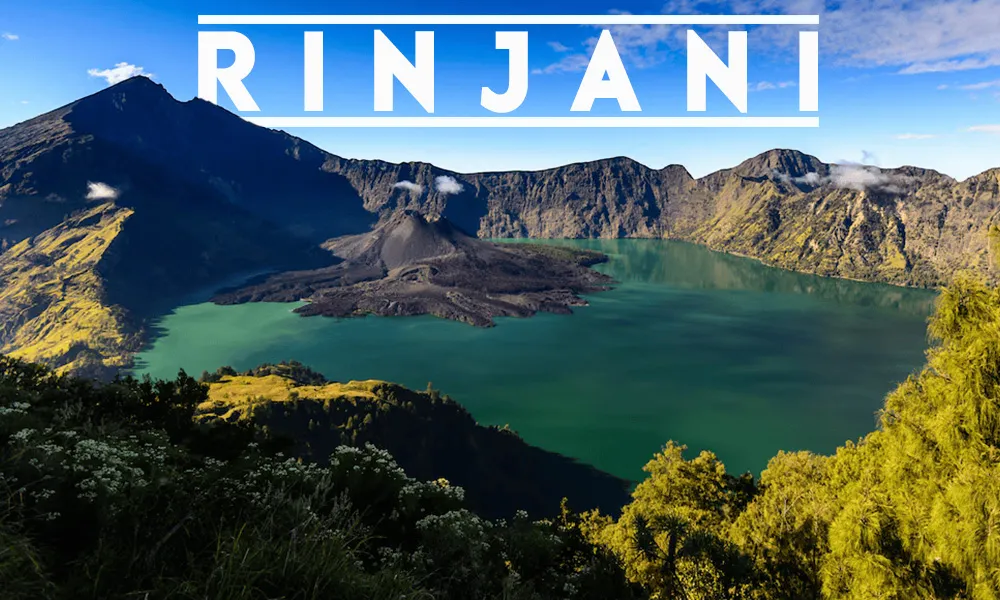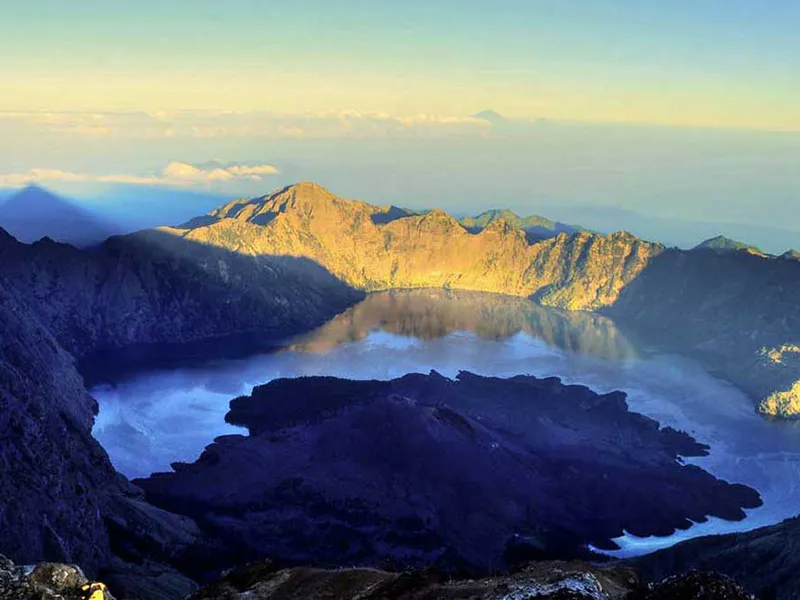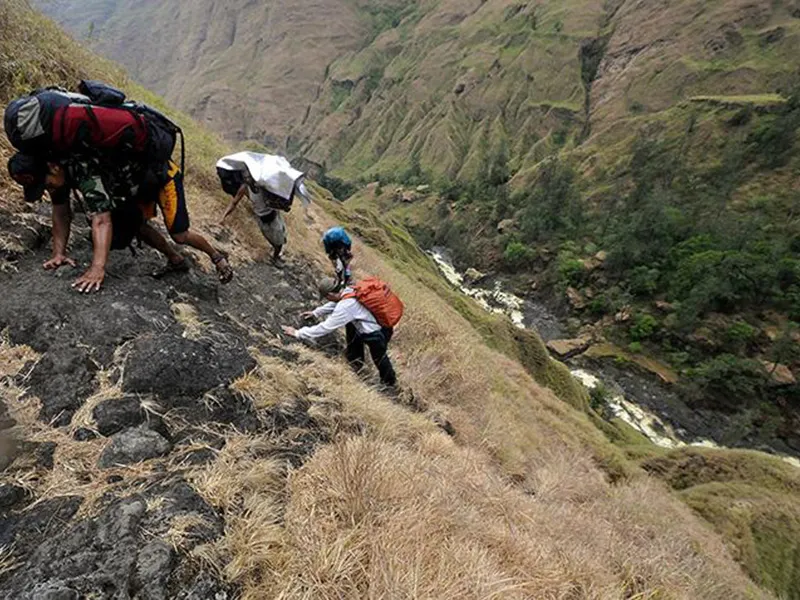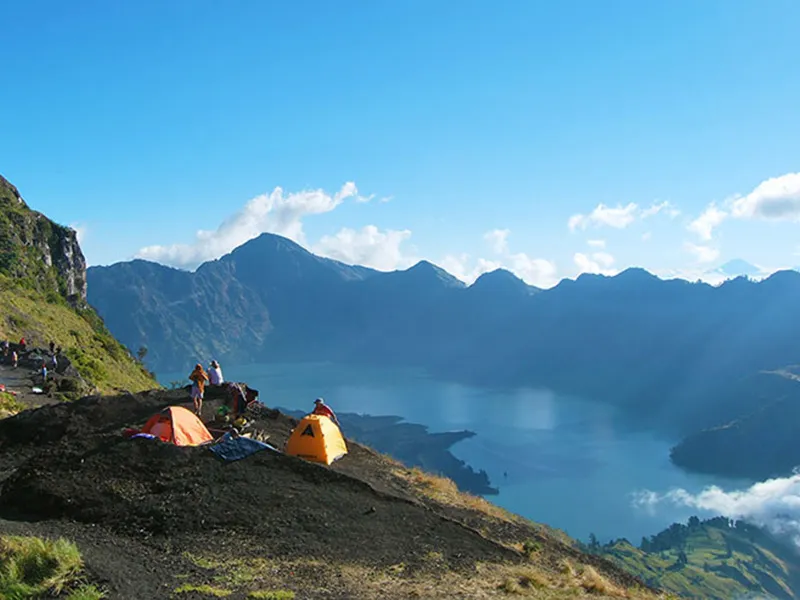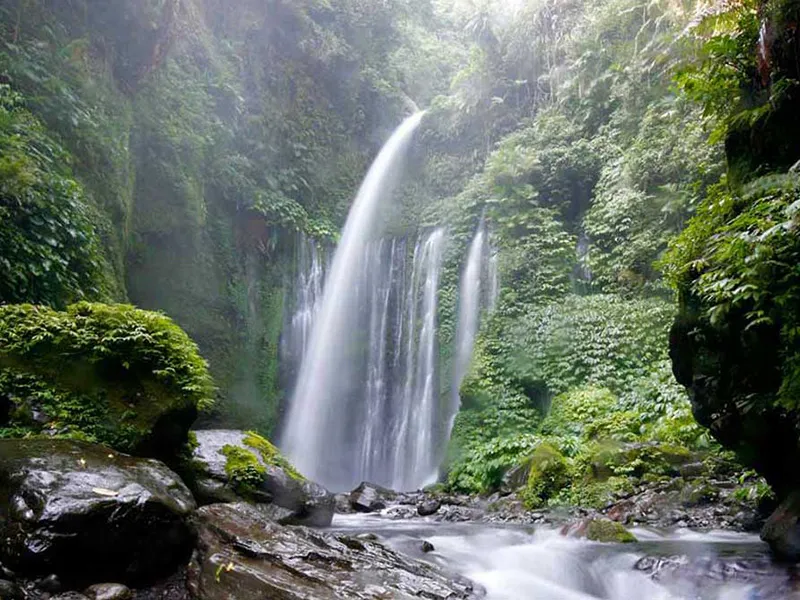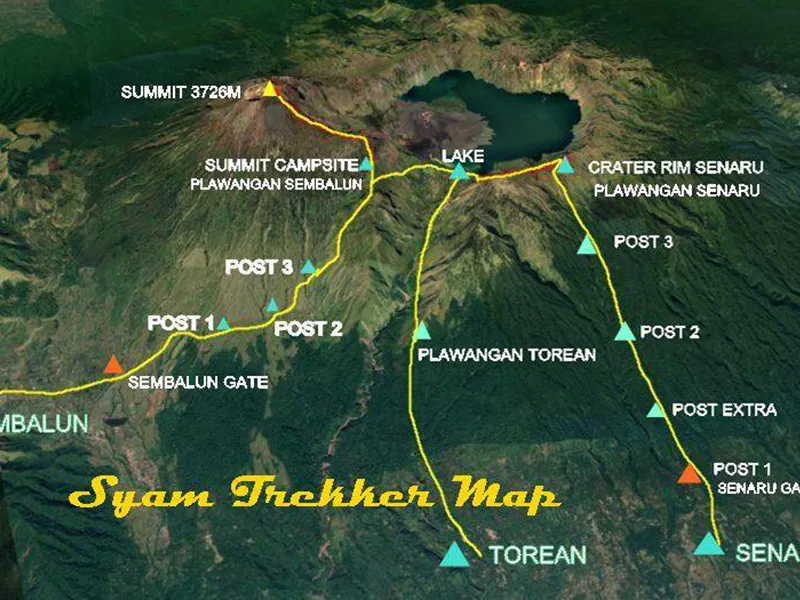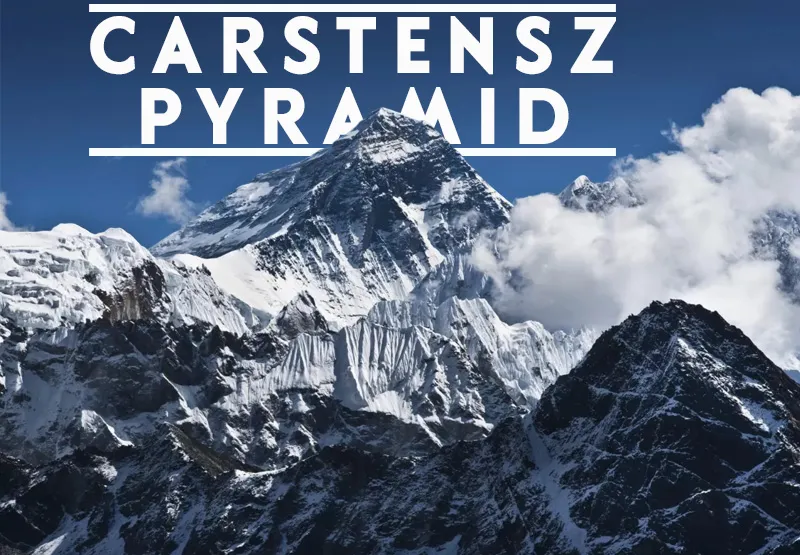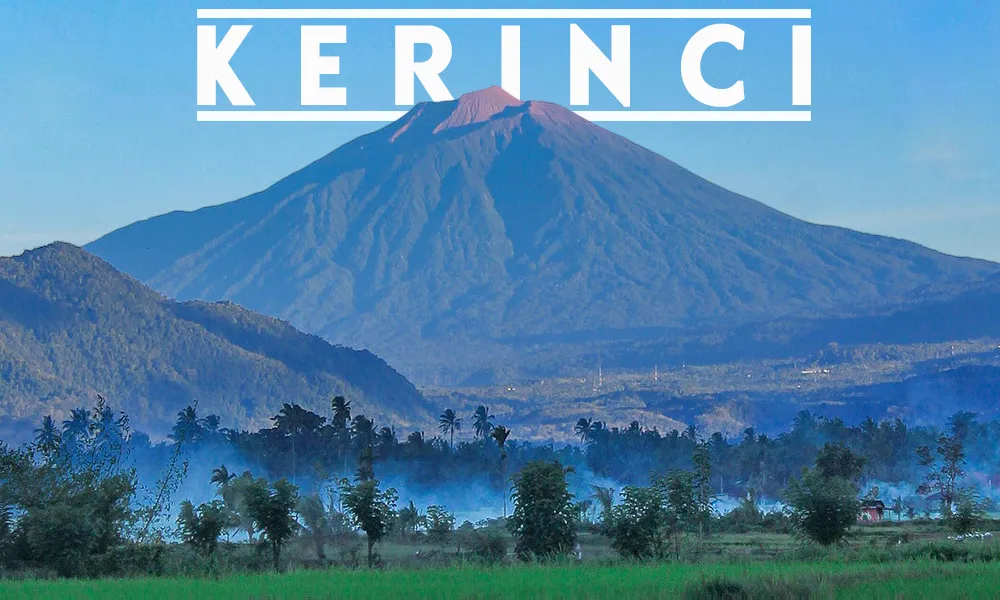Mount Rinjani – Lombok
Rinjani Summit or Crater Rim Trek - The Differences
There are two main options to consider when you are interested in a Mount Rinjani trekking. When doing your research, you will read the words Summit Trek and Crater Rim again and again. The differences are not always as obvious as they may seem. The Crater Rim is at an altitude of 2,641 meters and from here you can see Segara Anak, the lake in the caldera, and the summit of Mount Rinjani clearly. The Crater Rim trek can be comfortably done in two days and one night. It is the easiest route for a great impression of the volcano in all its splendor. The sunset from Mount Rinjani is unforgettable.
On a clear evening, the Gili Islands, Bali, and Mt. Agung can be seen to the west. The same you can see from the Summit of course. The Summit trek is for peak baggers, who those want to climb Mount Rinjani. It’s still trekking. You won’t need ropes or anything similar, but it is the most strenuous version of Rinjani trekking. Although it is easiest to do the Summit Trek from Sembalun, you can also do it from Senaru. Most versions of the Summit Trek allow you to spend more time on the mountain. Although a fast ascent of just two days and one night is possible, most packages have a minimum of three days.In short: If you want to see the highlights of Mount Rinjani, the Crater Rim trek can be enough for you. If you want to spend more time on the mountain, tag the peak and get some elevation, the Summit Trek is yours.
Start from Sembalun or Senaru - The Differences
There are two main starting points for the Rinjani trekking. The one route starts from Sembalun, directly north of Mount Rinjani, and the other route, from Senaru Village, approaches the mountain form the Northeast.The Senaru route is a climbing route starting at 600m, going through the tropical rain forest, which isn’t too hot, but it does give you some solid elevation. The route is popular for going to the Crater Rim, to the hot springs and without having to climb the summit.
The Sembalun route is recommended for when you want to summit Mount Rinjani or come as close to the peak as possible. The route starts at an altitude of 1.100 meters which enables trekkers to do a fast track to the summit. The treks that approach the summit are best done from Sembalun. Compared to the Senara routes, the Sembalune route is a hotter route. On your way up you are crossing a meadow, which can be quite the humid experience.
Best Season for Climbing Mount Rinjani
From early January to March all Rinjani trekking activities are limited because of the peak of the rainy season. Hiking trails are closed in these months. Any other season is good for your Rinjani trekking. April to October counts as Summer and the rest of the year can be considered the rainy season. The months from April to October are therefore the best months for Rinjani trekking.
From July to mid-September it is the high season. You don’t have to take into account any potential rainfall as it is unlikely that there will be any. Rinjani trekking is most popular in these months and it is recommended to book accommodation in advance if you don’t have any booked yet. Every trekking company can sort you out with accommodation and if you book a Rinjani trekking package, accommodation is usually included.
Rinjani Trekking in One Day or Solo - Rather Not
Some trekking companies offer a one day option for trekking in Gunung Rinjani National Park. Although this may seem like a great option if you are short in time, it is very important that you realize that this is an illegal practice. You will be entering the National Park before opening times. This is strictly prohibited, especially since the Earthquake of 2018. Park authorities need to know who is in the park and therefore registration is mandatory. It is also illegal to enter Gunung Rinjani National Park without a guide.
Hiking Mount Rinjani Difficulty
The trek to the summit of Mount Rinjani can be quite a strenuous one. Compared to some old school Summit Treks, a trek to the Crater Rim is an easier option. Right? Well, that depends. The Crater Rim is at an altitude of 2,641 meters and this means that you are likely to hike almost 1000 meters in one go. Anyone with reasonable fitness is fit for Rinjani trekking. If you are unsure about your level of fitness and have some time at your disposal, it is recommended to opt for longer versions of your trek. 3 days will be easier for you than 2 days. Having said of all that, make sure that you come to the mountain prepared. You are not on the beach anymore and you can forget to do go Rinjani trekking on your flip flops.
Porters on your Mt. Rinjani trek
When you are climbing Mount Rinjani you are never alone. You are likely to enjoy the services of a guide and there will definitely be porters on your way up to the crater rim or the summit. Porters are the backbone of Mount Rinjani. Without porters, nothing goes on the volcano. If you have ever met porters in Nepal or on Mount Kilimanjaro, you must know that Mount Rinjani has its own porter culture. On the slopes of Rinjani, porters are dressed in nothing more than clothes and flipflops. Some porters even ditch the flipflops and go barefoot.
The majority of porters are local Sasak men living in the nearby Sembalun and Senggigi villages. The porters are usually already working on the mountain at the age of 18. Porters can make a living from the trekking industry on Rinjani. It is the major industry in Sembalun and Senaru. One can only imagine the impact the earthquake of 2018 had on the livelihoods in North Lombok. They earn 250-300 USD on average, excluding tips from trekkers.
Porters have excellent mental and physical power despite being heavy smokers. From years of carrying a heavy load, they have large calluses on their shoulders. With baskets attached to a bamboo pole, they fasten their load and balance it on one shoulder, swapping to the other when they begin to feel the pressure.
What To Do After Your Mount Rinjani Trek
The best thing to do after climbing Rinjani is to simply rest your legs. Fortunately, Lombok has a lot to offer for a tired Rinjani trekker. You can go sunbathe on Selong Belanak Beach, Sengiggi or you can go to the Gili islands to get the perfect breakaway. Where Gili Trawangang is famous for partying, Gili Air is good for a little bit more than that. Here you can enjoy the crystal clear water and the endless white beaches. Throw your legs in the air, preferably at a corner of the island from where you can see Mount Rinjani, reflect and relax. Perhaps you will regain your energy to such an extent, that you will feel strong enough to tackle Pergasingan Hill. We can’t think of a better way to say goodbye to Lombok.

